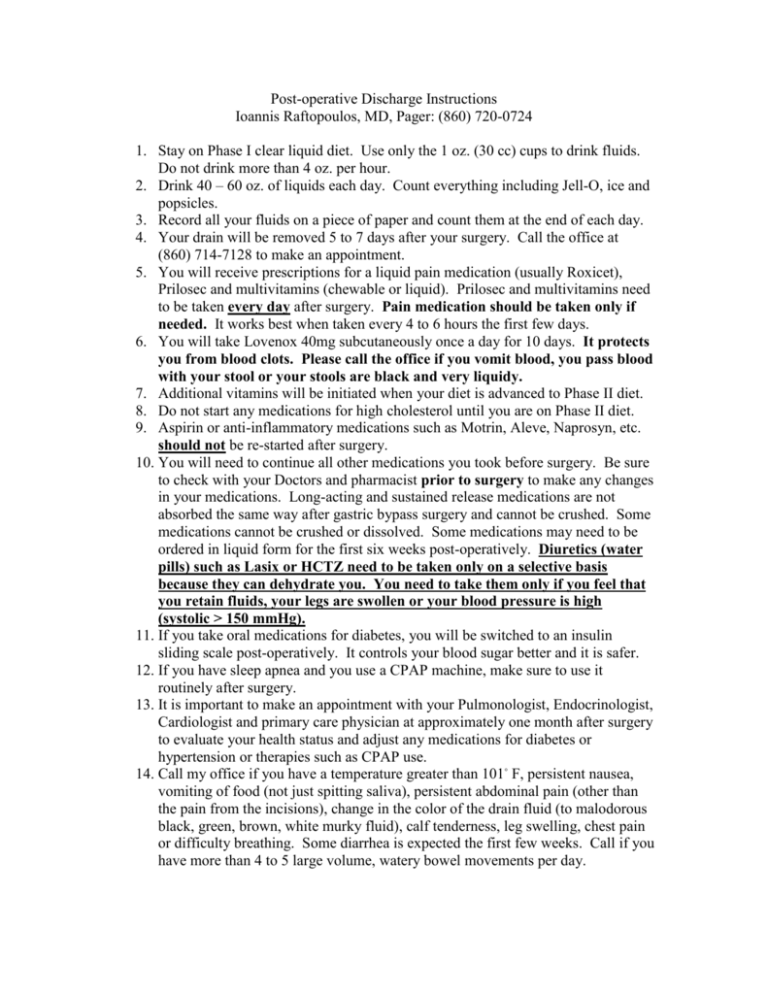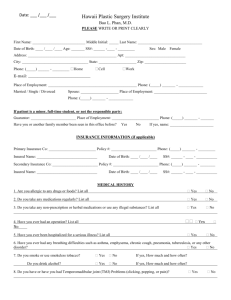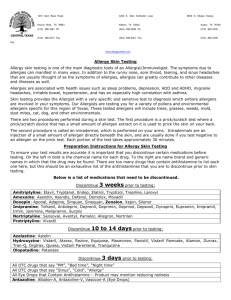Postoperative Discharge Instructions
advertisement

Post-operative Discharge Instructions Ioannis Raftopoulos, MD, Pager: (860) 720-0724 1. Stay on Phase I clear liquid diet. Use only the 1 oz. (30 cc) cups to drink fluids. Do not drink more than 4 oz. per hour. 2. Drink 40 – 60 oz. of liquids each day. Count everything including Jell-O, ice and popsicles. 3. Record all your fluids on a piece of paper and count them at the end of each day. 4. Your drain will be removed 5 to 7 days after your surgery. Call the office at (860) 714-7128 to make an appointment. 5. You will receive prescriptions for a liquid pain medication (usually Roxicet), Prilosec and multivitamins (chewable or liquid). Prilosec and multivitamins need to be taken every day after surgery. Pain medication should be taken only if needed. It works best when taken every 4 to 6 hours the first few days. 6. You will take Lovenox 40mg subcutaneously once a day for 10 days. It protects you from blood clots. Please call the office if you vomit blood, you pass blood with your stool or your stools are black and very liquidy. 7. Additional vitamins will be initiated when your diet is advanced to Phase II diet. 8. Do not start any medications for high cholesterol until you are on Phase II diet. 9. Aspirin or anti-inflammatory medications such as Motrin, Aleve, Naprosyn, etc. should not be re-started after surgery. 10. You will need to continue all other medications you took before surgery. Be sure to check with your Doctors and pharmacist prior to surgery to make any changes in your medications. Long-acting and sustained release medications are not absorbed the same way after gastric bypass surgery and cannot be crushed. Some medications cannot be crushed or dissolved. Some medications may need to be ordered in liquid form for the first six weeks post-operatively. Diuretics (water pills) such as Lasix or HCTZ need to be taken only on a selective basis because they can dehydrate you. You need to take them only if you feel that you retain fluids, your legs are swollen or your blood pressure is high (systolic > 150 mmHg). 11. If you take oral medications for diabetes, you will be switched to an insulin sliding scale post-operatively. It controls your blood sugar better and it is safer. 12. If you have sleep apnea and you use a CPAP machine, make sure to use it routinely after surgery. 13. It is important to make an appointment with your Pulmonologist, Endocrinologist, Cardiologist and primary care physician at approximately one month after surgery to evaluate your health status and adjust any medications for diabetes or hypertension or therapies such as CPAP use. 14. Call my office if you have a temperature greater than 101◦ F, persistent nausea, vomiting of food (not just spitting saliva), persistent abdominal pain (other than the pain from the incisions), change in the color of the drain fluid (to malodorous black, green, brown, white murky fluid), calf tenderness, leg swelling, chest pain or difficulty breathing. Some diarrhea is expected the first few weeks. Call if you have more than 4 to 5 large volume, watery bowel movements per day. 15. If you have persistent nausea, please call my office for a prescription for antinausea medication. Do not take too many medications at one time, as this could lead to nausea. 16. You may shower. No baths or hot tubs. All dressings are waterproof. Only the drain dressing needs to be changed once a day and every time you take a shower. 17. Make sure you walk many times during the day at home as blood clots can occur even a month after surgery. 18. Empty your drain as instructed 1 to 2 times a day and record amount of drainage.







